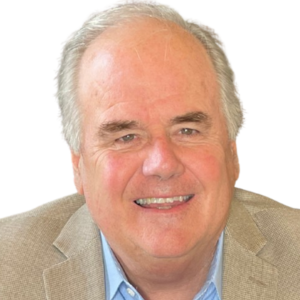“Staffing Is Not a Complex Problem”
According to Dawson, who heads the prestigious Paraprofessional Healthcare Institute (PHI) and was a key contributor to the recent Institute of Medicine report Retooling for an Aging America: Building the Health Care Workforce, “Staffing is not a complex problem, but it is a difficult one. We know what works. The difficulty lies in developing the political will to deal with it and, with that, it could be solved in short order.” Dawson recently amplified on his views in this online exclusive interview with Long-Term Living Editor-in-Chief Richard L. Peck.
Peck: What is the basic staffing problem in long-term care?
Dawson: The quality of these jobs is quite poor. So it isn’t surprising that this leads to turnover and poor quality of care. But it’s important to distinguish between whether this is a complex problem or merely a hard one. I’ve attended meeting after meeting where people spoke of this as a complex problem, of not knowing what to do. But there’s really no mystery here, it’s a matter of providing a living wage, healthcare coverage, support, and recognition of what these workers do and providing the training they need to do the job well. It’s a matter of political will. It’s like running a mile or two—it’s not complex but it does take considerable willpower.
Peck: How does PHI weigh in on this?
Dawson: PHI is provider-based. We come out of the home healthcare field—we are directly affiliated with several large homecare agencies, but we also consult with several dozen nursing homes. In doing this work every day we recognize the challenges. But we do know what to do, it’s just difficult to do it—an important distinction. And money—focusing resources better, as IOM recommends—isn’t the only answer.
Peck: You and the IOM have recommended significant training upgrades for these workers. Would you discuss that?
Dawson: We need more competency-based training, focused on specific skills needed. We need more adult-centered learning techniques, realizing that most of these workers have high school educations at most, often less; typical classroom techniques are not effective. We need interactive instruction, with hands-on response, and building on what people already know from their own caregiving experiences in life. Most of our successful hires have been people with this caregiving experience already—in their homes, through a church—and it’s a matter of building on that. In home healthcare we’re looking for maturity, and the average age of these entry workers is higher than that of entry workers in SNFs. Home care workers in particular have to be able to interact with clients and family members and self-manage in difficult situations. Of course, self-management on the home healthcare side is crucial—there is no daily monitoring, as there is in nursing homes, and if regulation of nursing homes is difficult, managing home healthcare is even more so. I think most people would agree, however, that regulation of quality in nursing homes has pretty much reached its limit. Quality can only be achieved with a quality approach to staff.
Peck: What you’re saying makes the problem sound conceptually simple. So why is it so difficult?
Dawson: Because the fundamental problem has to do with the industry’s current basic business model of low-investment, high-turnover. It’s based on the assumption that there’s a virtually endless supply of these workers, but I believe that the era of an endless supply of labor is coming to an end. The demographics and the realities of wage competition are pointing to a dwindling supply of these workers, just at a time when we need to expand the workforce by a million workers over the next 10 years. The approach to dealing with this new era will instead have to be “high-investment” on several fronts. We’re not saying that there will be a net savings of money with good staffing practices—although that could be true in several cases. What we’re saying is that investing in staff costs less than administrators might think and, most importantly, is the only realistic path to achieving consistently high-quality care.
Peck: Would you offer examples of facilities or organizations that have done an exemplary job of this high-investment approach to staffing?
Dawson: We know of many, but several facility-based providers I would name would include Isabella Geriatric in New York City; Homestead Village in Lancaster, Pennsylvania; the Genesis system in New England; Meadowlark Hills in Manhattan, Kansas; and Edgewood Centre in Portsmouth, New Hampshire.
For further information, visit www.phinational.org and www.PHInational.org/clearinghouse.

Richard L. Peck was editor in chief of I Advance Senior Care / Long-Term Living for 18 years. For eight years previous to that, he served as editor of the clinical magazine Geriatrics. He has written extensively on developments in the field of senior care and housing.
Related Articles
Topics: Articles , Staffing











